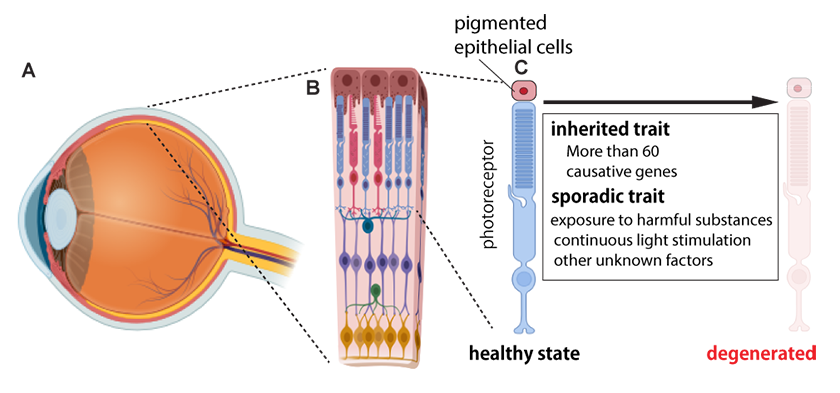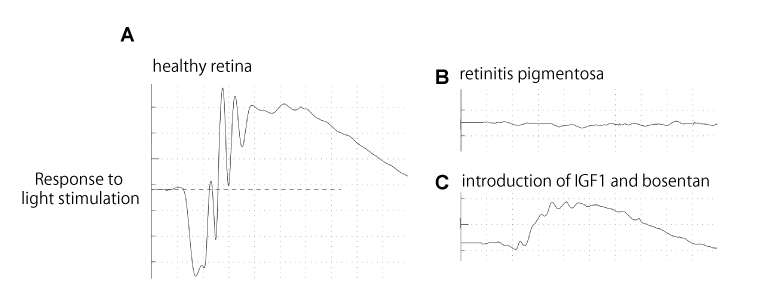2024.08.01
Analysis of the onset of an inherited retinal disorder and exploration of novel therapeutic methods
Developmental Biomedical Science ・ Associate Professor ・ Noriaki Sasai
We have been conducting research on an eye disease called retinitis pigmentosa. Retinitis pigmentosa is a disease that causes severe visual impairment. At birth, there are almost no symptoms, but vision gradually deteriorates with age, and in severe cases, it can lead to blindness. Recently, by using a single-cell gene expression analysis, we have identified genes that change during the onset of the disease in a mouse model of retinitis pigmentosa. We currently aim to develop new therapeutic methods that target these genes.

(Figure 1) Structure of the eyeball. The retina is located at the back of the eyeball (A,B), and photoreceptor cells are one of the cells that first detect light stimuli from the outside of the body. Retinitis pigmentosa occurs when these photoreceptors (or the retinal pigment epithelium cells located above them) begin to degenerate due to various factors (C).

(Figure 2) Evaluation of visual function by electroretinogram. Electroretinograms in a normal (A) and a mouse with retinitis pigmentosa (B). When a gene that improves glucose metabolism (IGF1) was introduced together with the endothelin inhibitor bosentan, visual function was partially restored (C).
Noriaki Sasai NAIST Edge BIO, e0026. (2024).
